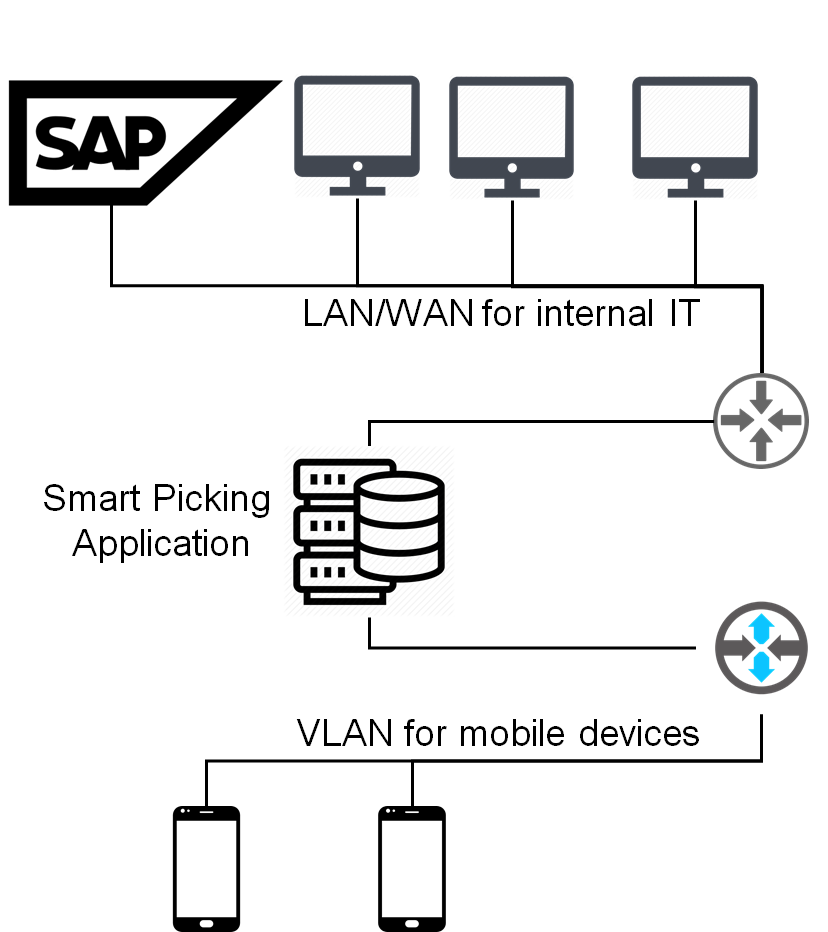The experiment “Best Route” took place in the logistics department of the smart factory of Deutz-Fahr in Lauingen (DE). Goal of the experiment is to assess how the MIDIH platform can support improvements in the Picking procedure, by speeding up the process and by reducing the number of Picking errors.
Initially, order-related parts were picked using an automatic SAP generated picking list, which was printed out and handed over to logistics employees. Employees used this list without prescribed picking sequence with a route chosen at own discretion. This frequently lead to an inefficient picking path, especially for inexperienced employees, who needed a long training period. After picking, a scan of the part number via manual barcode scanner confirmed the executed picking order. However, there was no system to cross check and provide feedback if the picked parts were the correct ones. Part of the problem was that the picking procedure is not very comfortable for logistics employees who needed two free hands to pick some relatively large parts, but also needed to hold in their hands the picking list and a barcode scanner.
The application developed as part of the experiment will be used productively by the customer in the future. The customer is currently evaluation the possibility to use this application in a different area of the same factory and in other factories.
The Best Route architecture followed the MIDIH reference one using the Apache toolset. Several MIDIH elements were not needed in the context of the Best Route experiment. It should be remarked that the Data Analytics layer already existed before the Best Route experiment, which become one additional data provider (the customer had a Data Lake in the Azure Cloud already before this experiment). The Best Route application runs within the Infrastructure of Deutz-Fahr, in a separate VLAN. The application will be connected with the LAN used e.g. by SAP and by office workers. However, the mobile devices (smart phones or tablets) will not be able to route data to the office LAN.

The Best Route experiment showed that an optimized process– based on MIDIH technology – helps achieving the following results:
The Experiment will have a clear positive impact for Beck et al and its customers.
The most immediate exploitation for Beck et al. will be three folds: